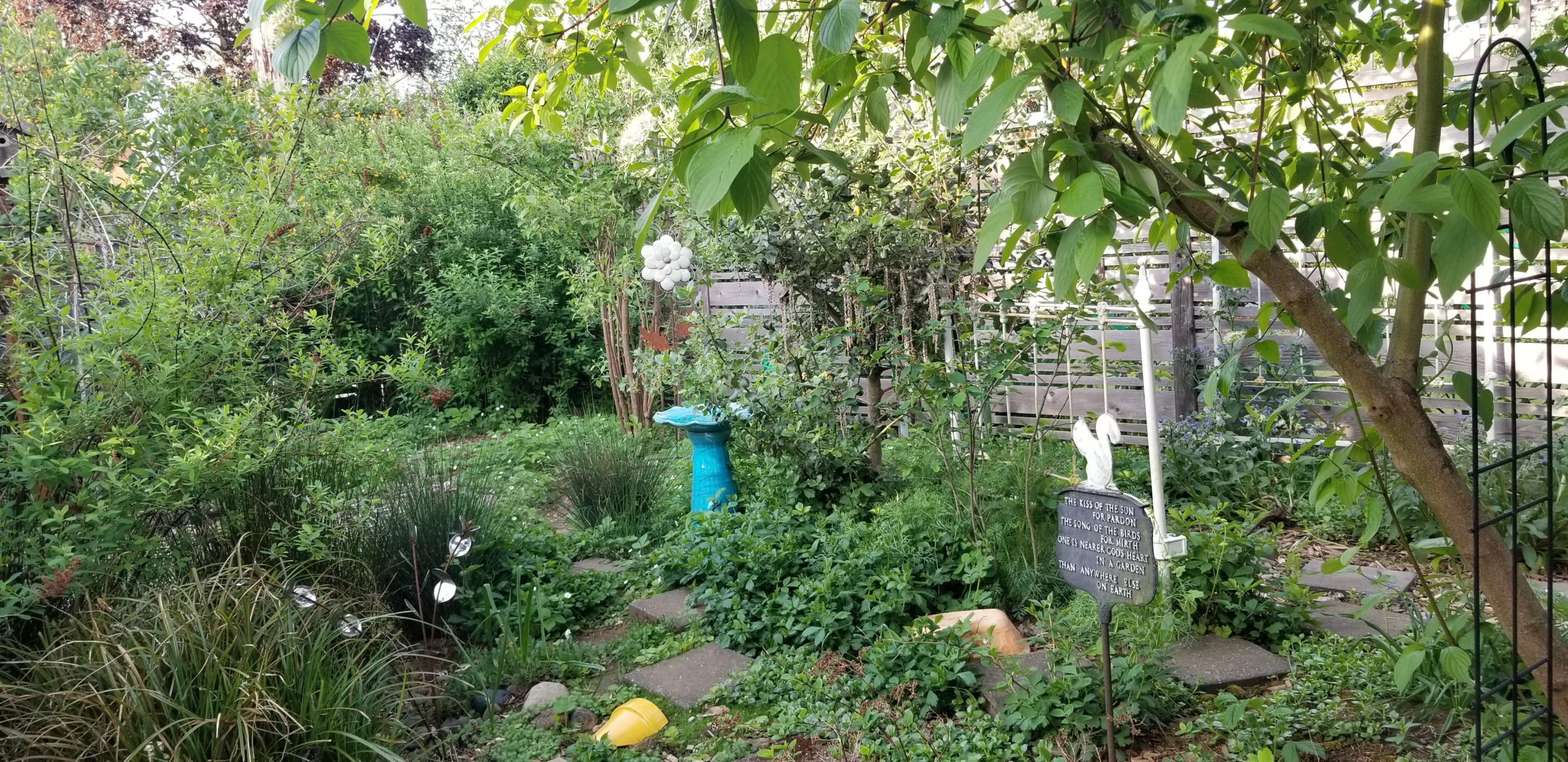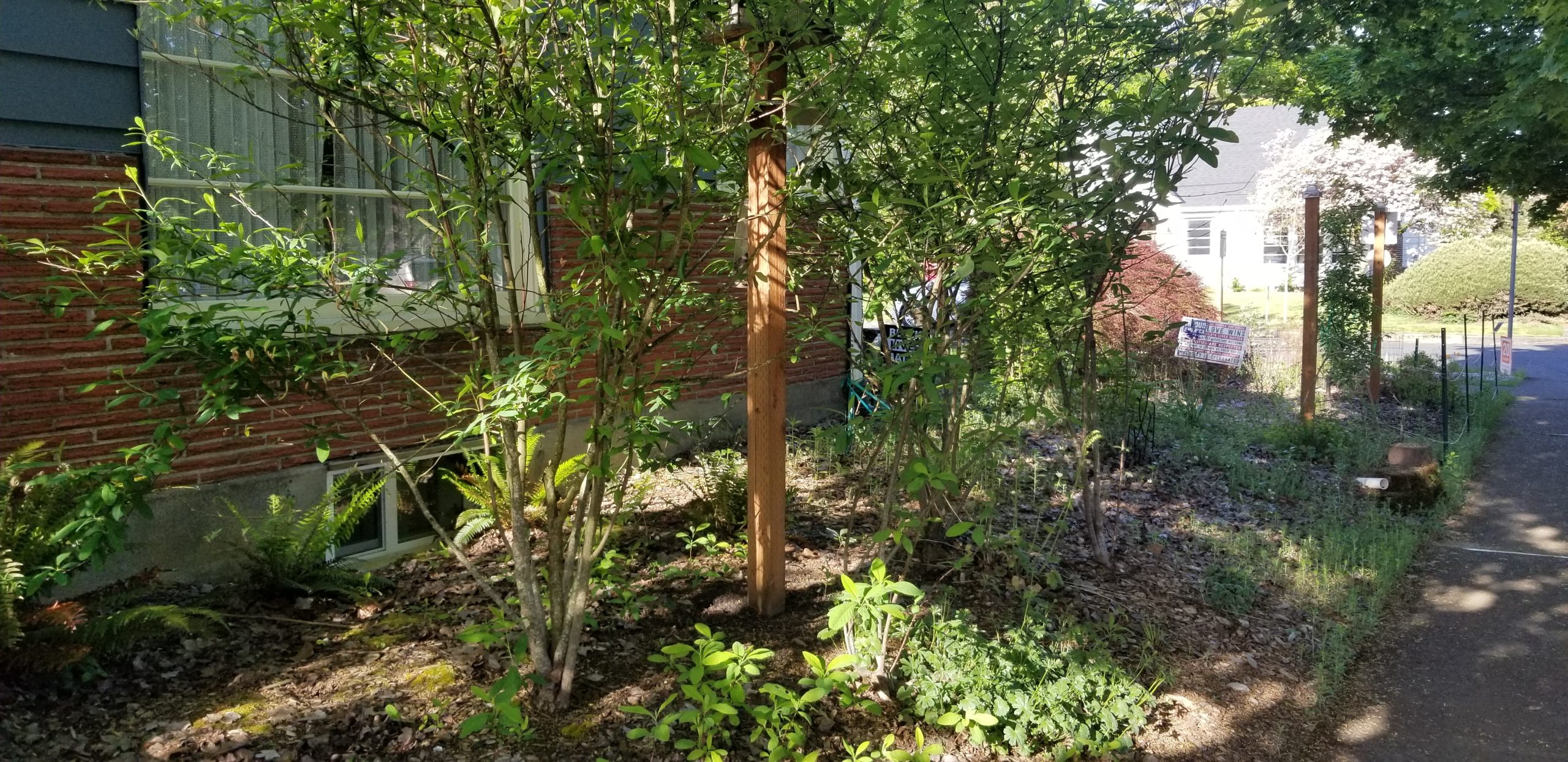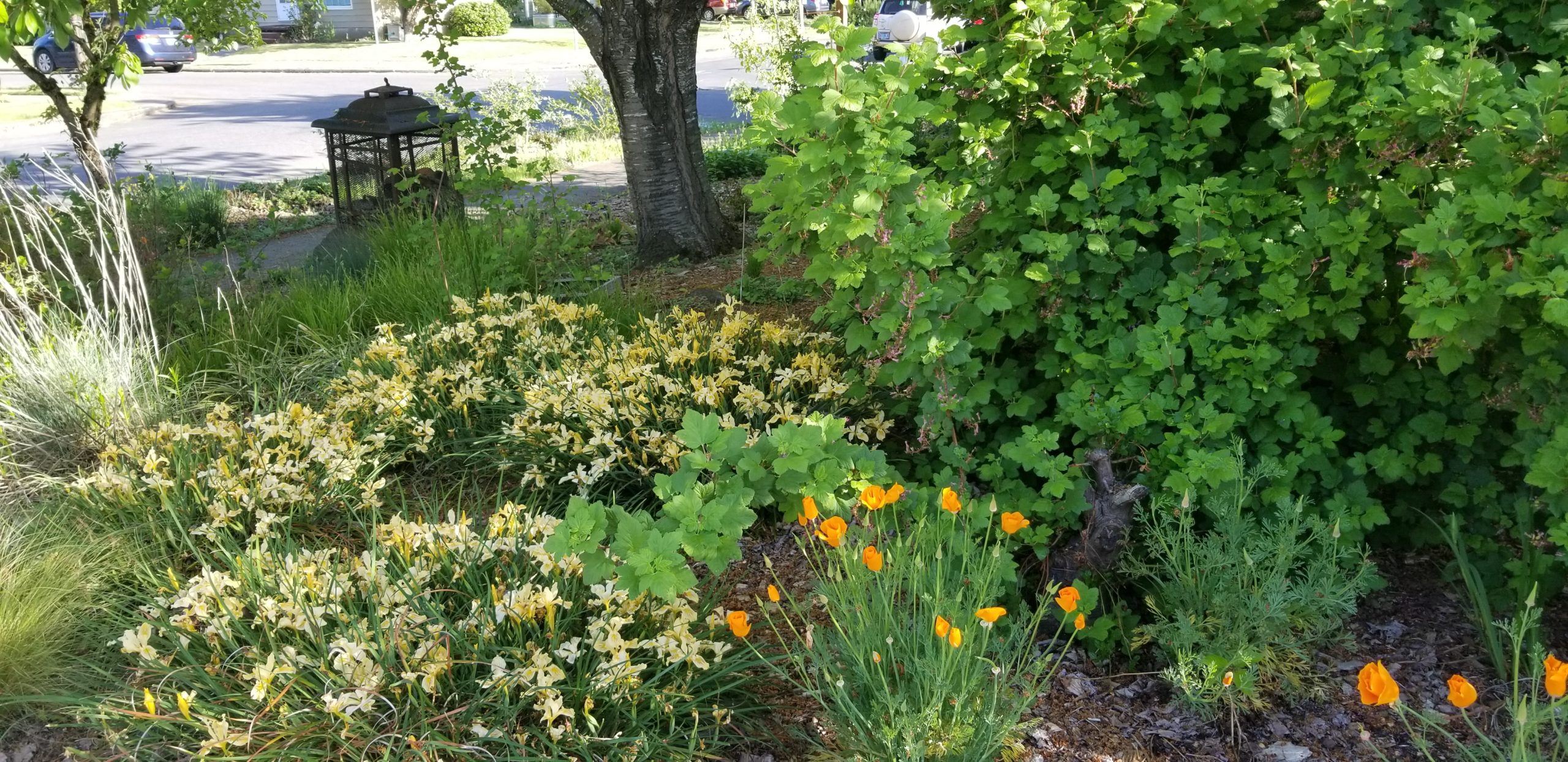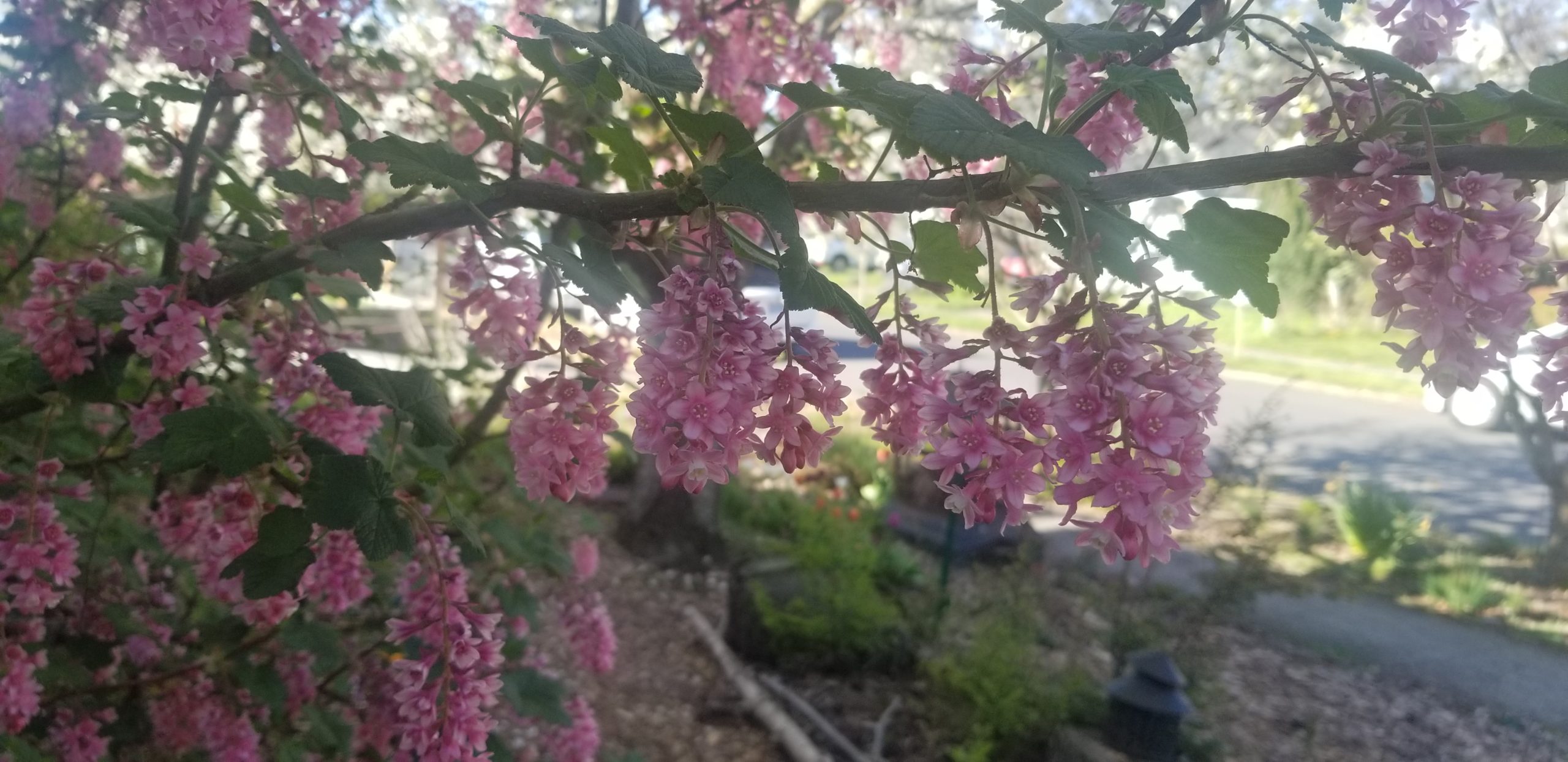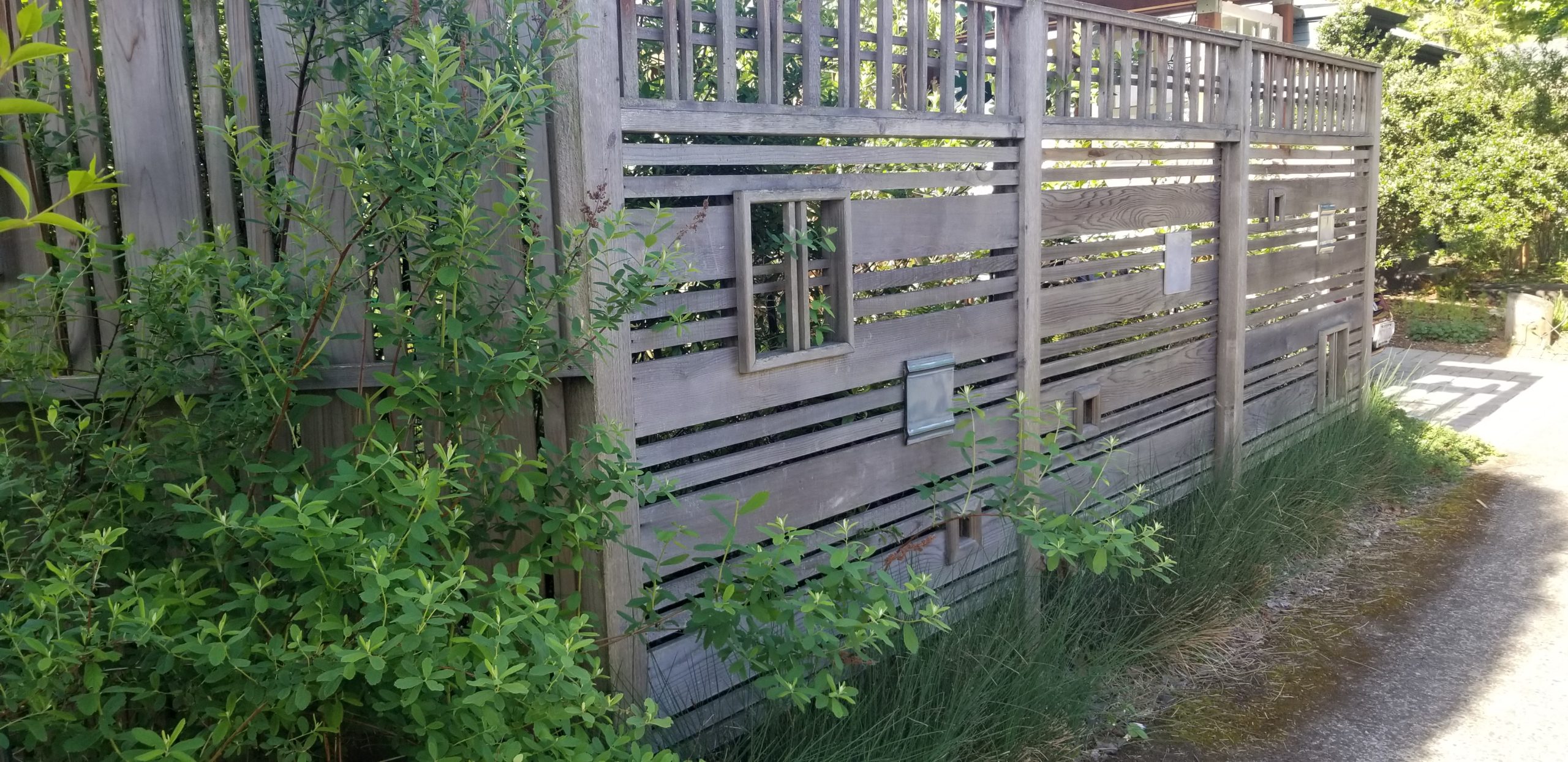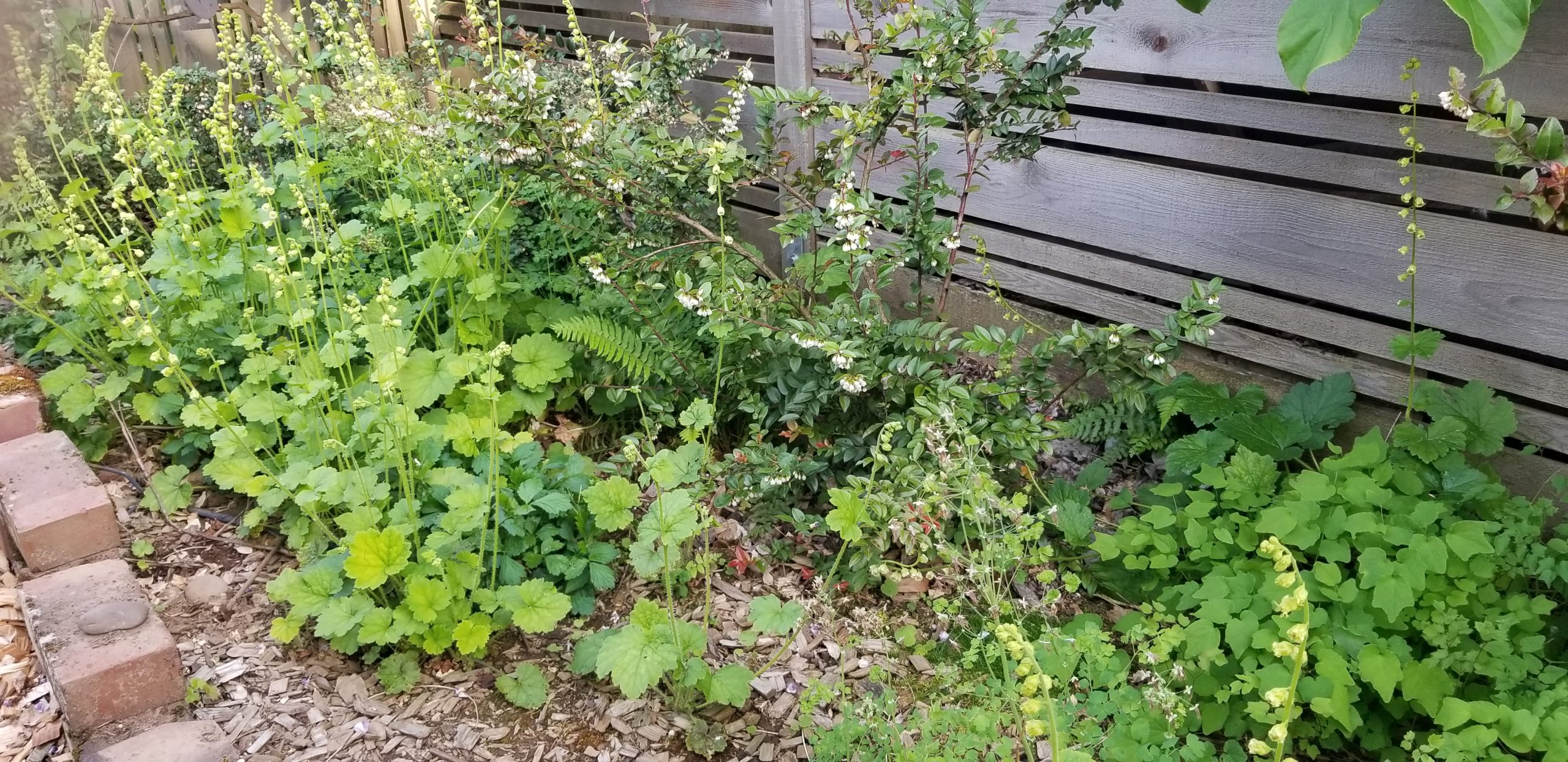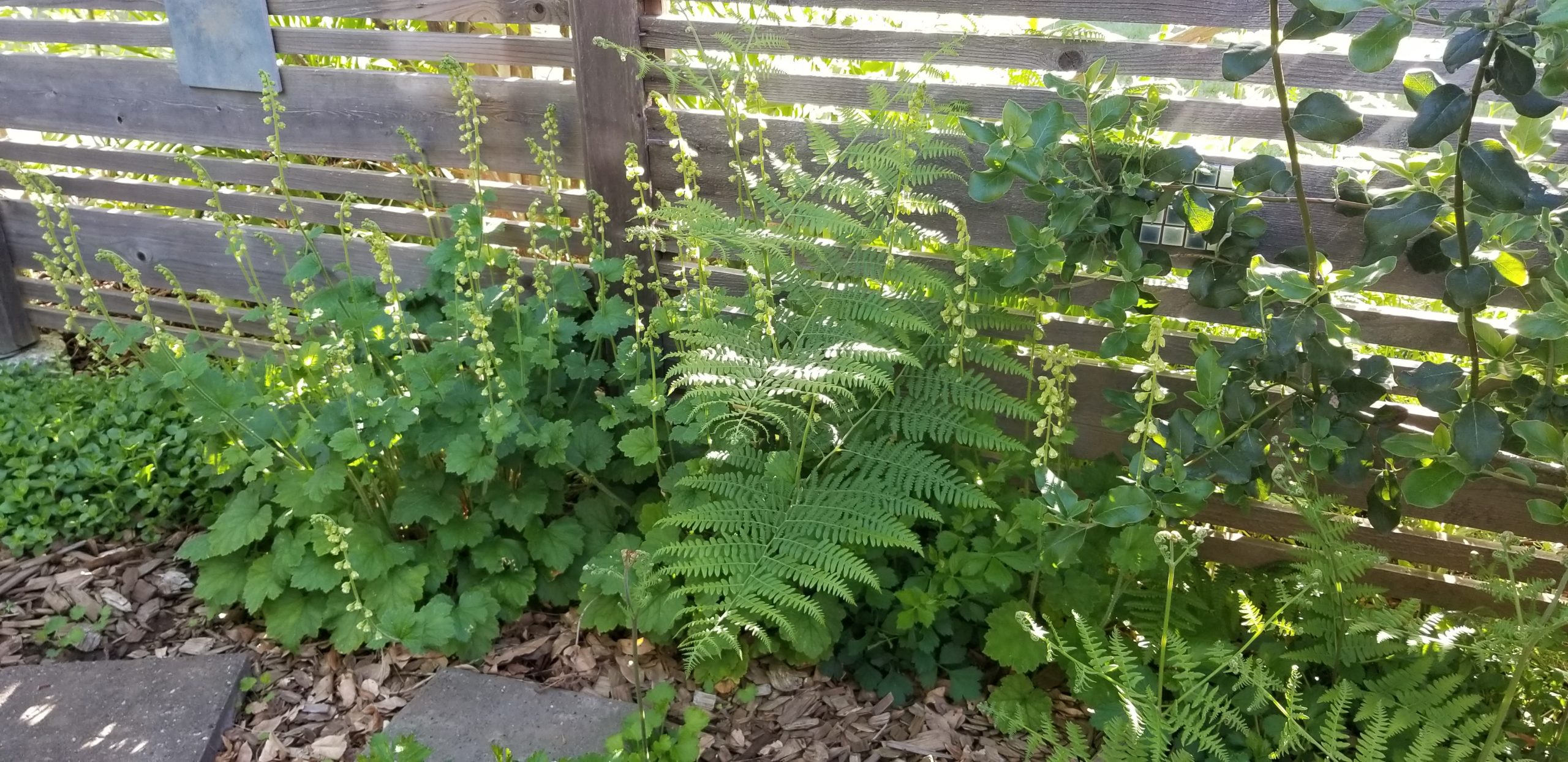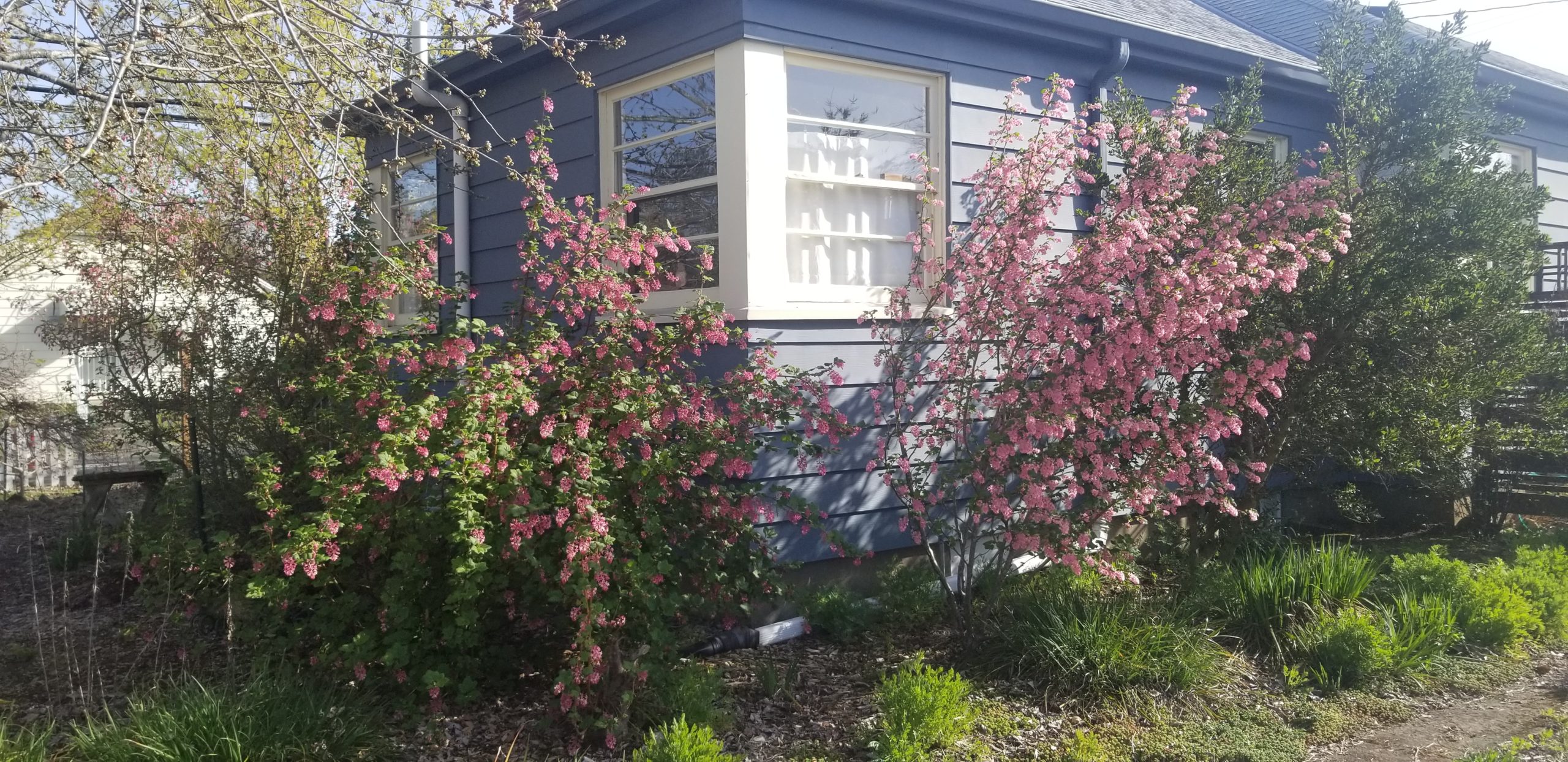Site Information: Debbie’s habitat in South Tabor in SE Portland has full sun to part shade to full shade conditions and dry to moist soil conditions
What inspired you to enroll in the Backyard Habitat Certification Program?
It has been so long ago, I don’t remember how I originally got connected! I remember I used to get so overwhelmed by so many plant options at the nursery, so I liked focusing in on natives, and ecologically, it made so much sense. I wanted to contribute something positive with my yard.
How would you describe your habitat?
My yard is mostly native plants with a small amount of food production and some non-natives, such as 3 fully grown Norway maples (!). There isn’t any lawn, just planted areas and paths, and some bare spots for native bee nesting. I have three rain gardens and three “insect hotels”, one of which is built into the fence and another one that the neighbor kids have filled with twigs and other natural debris. I have been intentional about planting for year-round blooms. I am close to that goal, but the hotter summer may be changing that some. In 2020, I was able to replace a broken concrete driveway and patio with permeable pavers.
What are your top three favorite native plants and why do you love them?
- Red-Flowering Currants – Amazing spring blooms! I have several planted outside my office windows and am constantly distracted by interesting insects and bees in the spring and entertained by the birds trying to get the fruits in the late summer.
- Evergreen Huckleberry – Year-round interest with evergreen leaves, flowers and fruit, and they grow in such interesting shapes.
- Osoberry – For their early blooms, getting spring started!
What changes have you observed as a result of creating habitat?
SO many different insects and bees! And, a good variety of birds.
What were the two most significant challenges you encountered while creating habitat, and how did you address them?
I have just one! When I bought the house in 2012, one part of the yard was surrounded on three sides by a huge, unruly hedge that included some holly – probably a good 75ft of hedge. Maintenance of it was awful. After SO much work to dig up the first few sections of it, I actually bought an engine hoist to use on the rest. It wasn’t as easy as the video (https://www.youtube.com/watch?v=1ErA0yva4qU) indicates – my hedge was much bigger, but it does work! And, I have lots of funny stories with my friends and family who helped at various times. It took me a few years, but I eventually got rid of the last of it and have replaced it with a “bird friendly” fence – it doesn’t go all the way to the ground and has various openings to allow birds to flee predators.
What resources did you find especially helpful?
Anything from the BHCP or the EMSWCD! I completed the OSU Extension Master Gardener training in 2013, so that really helped me with basic information about soils, plants and insects, but it certainly isn’t necessary for growing and enjoying native plants.
How do you enjoy your Backyard Habitat throughout the different seasons? What are its highlights in each season?
As I mentioned, I’ve tried to plant for blooms during as many months as possible, so I am always looking for those. Otherwise . . . Fall – huckleberries. Winter – birds finishing off the last of the shrub fruits and seeing buds starting to form. Spring – flowers, flowers and more flowers. Summer – seeing the way various plants propagate, fruits maturing, seed pods bursting.
What part of your backyard habitat are you most proud of?
I appreciate the mature shrubs and being able to experience their full potential – their cycle, their size and shape, their interactions with birds, bees and other insects.
Is there anything else you’d like to add about your journey?
When I bought my house, it was all lawn and cultivars. I used the layering method to cover the lawn the first fall I lived here, and asked all my neighbors to put their leaves IN my yard. They came with wagons, wheelbarrows and even truck loads of leaves! I think they thought I was a bit crazy, but hopefully it makes more sense to them now.
